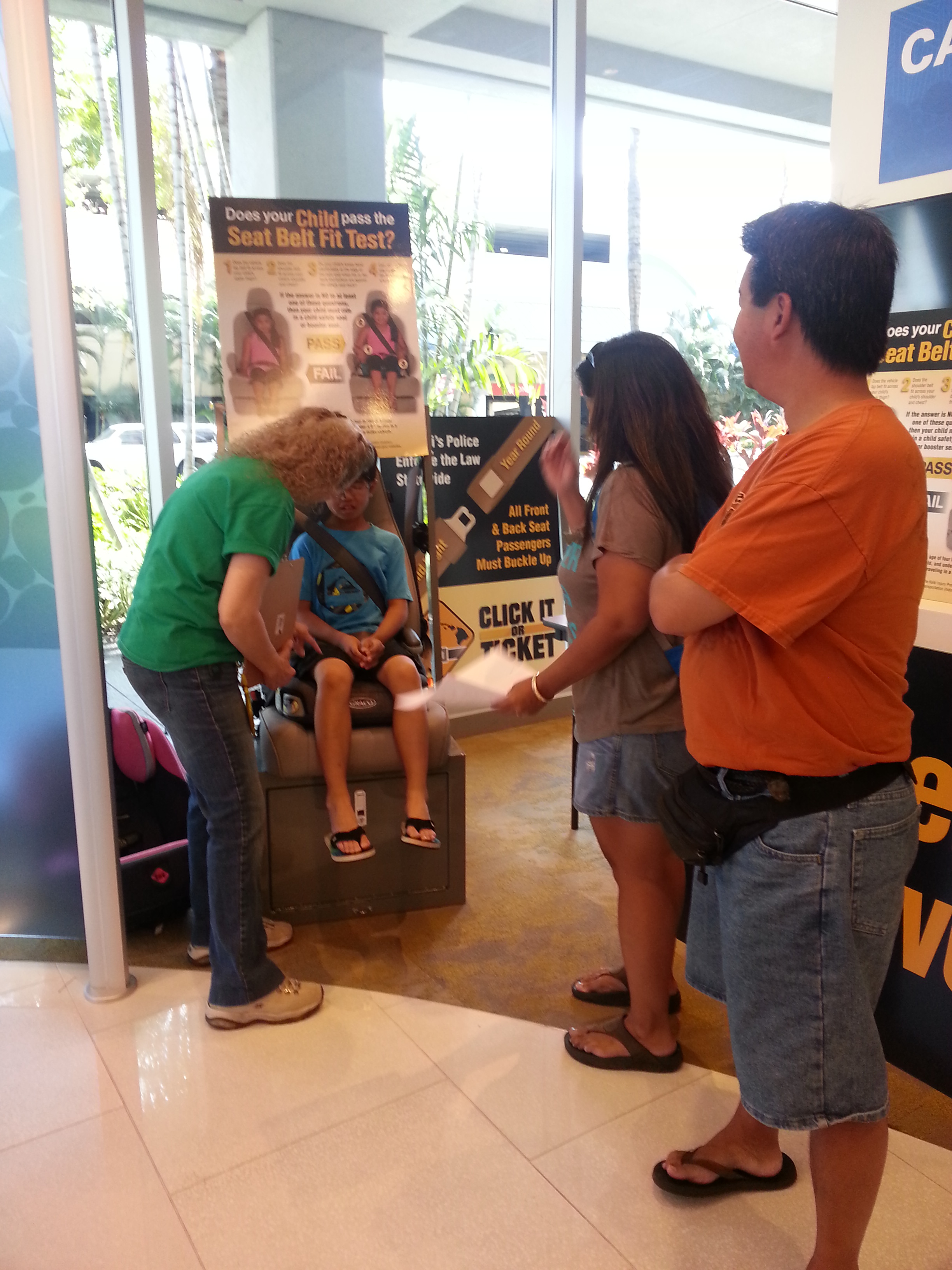DOT to Hold Free Keiki Car Seat Checks
The Hawai‘i Department of Transportation is teaming up with the Hawai‘i County police department and child passenger safety advocates to promote National Child Passenger Safety Week, with a free public car-seat check event scheduled at two locations on the Big Island on Saturday, Sept. 24.
During Child Passenger Safety Week and throughout the year, Hawai‘i’s child passenger safety technicians are dedicated to helping parents and caregivers learn how to correctly install child safety seats and properly buckle up their keiki, whether it’s in child safety seats, booster seats or when using the vehicle’s seat belts.
Free public car seat check events will be held on National Seat Check Saturday, Sept. 24:
Target, Hilo
391 E. Maka‘ala St.
10 a.m. to 2 p.m.
Target, Kailua-Kona
74-5455 Makala Blvd.
10 a.m. to 2 p.m.
“Hawai‘i’s keiki are our most precious asset, we can and need to do better to give them the future they deserve,” said Ford Fuchigami, Hawai‘i DOT Director. “Parents and caregivers can improve their child’s safety by simply using child safety seats, booster seats and seat belts properly.”
In Hawai‘i, children under 4 years old are required to ride in a child safety seat; children 4 through 7 years old must ride in a child passenger restraint or booster seat. Violators are required to appear in court, and if convicted, must attend a four-hour class. They may also be assessed a penalty of up to $500.
According to 2014 data from the National Highway Traffic Safety Administration (NHTSA), nearly 24 percent of children ages 4 through 7 years old were prematurely moved to seat belts, and 9 percent were unrestrained. Children should remain in booster seats until they are 4 feet 9 inches tall and can use seat belts correctly without the booster seat.
Before a child can be moved from a child safety seat to a booster seat, parents and caregivers should check for the following:
- The lap belt fits across the child’s upper thigh;
- The shoulder belt fits across the child’s shoulder and chest;
- The child’s knees bend comfortably at the edge of the seat when his or her back and bottom are against the vehicle seat back; and
- The child can stay seated properly during the entire trip.
Additionally, the American Academy of Pediatrics is now advising that children ride rear-facing until at least the age of 2. To educate the public about this recommendation and Hawai‘i’s child restraint law, the HDOT is airing public service announcements on television and in movie theaters statewide. Hawaii’s child passenger safety media campaign is 100% federally funded.
Hawai‘i has more than 340 certified child passenger safety technicians, including firefighters, law enforcement officers, medical professionals and parents. All technicians have been trained to provide instruction on choosing the right car seat, installing it and using it correctly.
“Each county has child restraint inspection stations and community car seat checks to ensure that all children return home safe,” said Fuchigami. “Parents and caregivers should utilize these free resources to better protect their children.”
Child Passenger Safety Week is sponsored by NHTSA. For more on child safety, as well as a list of child restraint inspection stations and community car seat check, visit www.kipchawaii.org or www.safercar.gov/parents.














